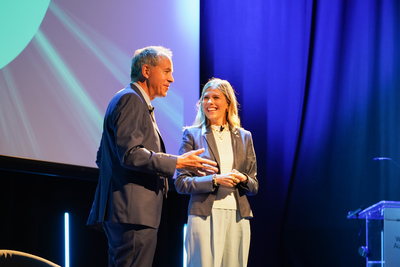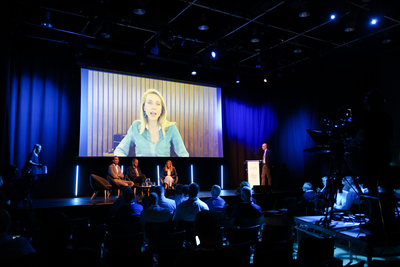Collaboration remains critical, say broadcast and automotive leaders
23.06.2022
- Broadcasters and car makers come together at WorldDAB Automotive 2022 event
- Calls for collaboration to maintain radio’s continued dashboard dominance
- New Driver Distraction guidelines to ensure safety in connected cars
Leaders across the broadcast and automotive sectors yesterday called for continued collaboration between the two industries, at WorldDAB Automotive 2022 in London.
Speakers emphasised the importance of working together to ensure that radio retains its place at the centre of the connected dashboard, and to continue to offer the best possible audio experience for drivers.
WorldDAB’s President, Patrick Hannon, set the tone in his opening speech, noting that DAB+ now comes as standard in 94% of new cars sold in Europe. “Users expect high-quality, free to air radio as a key feature,” he said. “Our job is to deliver the best possible experience today and in the future.”

Martin Koch, Head of Platform Steering Infotainment at CARIAD/VW Group backed this up. “The position of DAB+ in the car was never more solid than today, but FM could start to be in danger,” said Koch, noting that music and radio remain key in the car. “It’s in the core interest of the car maker to keep the key user cases of radio and navigation as simple as possible,” he added.
Sibyle Veil, Chief Executive Officer of Radio France made a passionate appeal to automobile manufacturers and suppliers. “Give radio stations an easy, direct, one-touch access on car software on-screen,” she urged. “As a media company we do not want our content to be curated and managed by a third party. Moreover, we need to get direct access to listeners to better understand our users and to improve our content.”

“Our goal is to offer the best possible quality to match the quality of your cars,” Veil added. “The way to achieve this is to give one-touch access to the best providers of audio content, especially radio stations.”
Mike Hawes, Chief Executive of the SMMT gave an overview from the manufacturing sector, noting that connectivity is growing in the vehicle parc. “What you’ll see is this continuing evolution of technology, increasing consumer choice and availability in the car,” he said.
Hawes noted this will increase potential driver distraction, and welcomed WorldDAB’s new Driver Distraction guidelines, presented for the first time at the event. “Safety is the number one priority for manufacturers,” he said. “We welcome the work of WorldDAB’s User Experience Group — ongoing collaboration is key to ensuring the best experience for in-vehicle.”
WorldDAB’s newly launched Driver Distraction guidelines have been produced with expert input from both the automotive and broadcast sectors, to ensure displays are safe for drivers while still providing the information listeners expect to see on their digital radio display. The guidelines cover four key areas for in-vehicle visuals: legibility, relevance, frequency and local legislation.
Other sessions at WorldDAB Automotive 2022 explored future priorities for the two sectors, such as personalisation and voice technology, including station name recognition, and improving search accuracy.
Speakers also noted the key role DAB+ digital radio can play in emergencies. “When incidents happen, the broadcasting network works because we have more redundancy when it comes to equipment, power supply and programme feeds” explained Håvard Wien of Norway’s NRK. TISA — the Traveller Information Services Association — similarly highlighted its new TPEG emergency alerts standard and trial.
